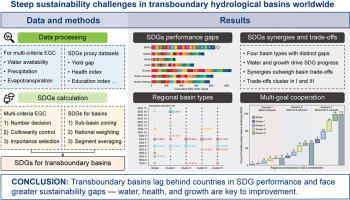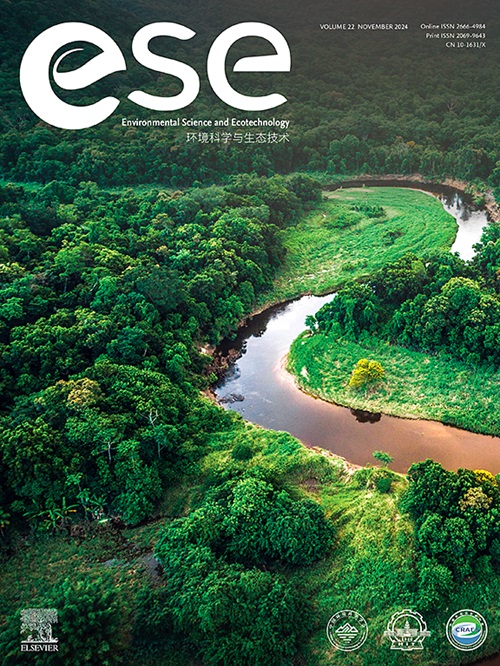全球跨界流域面临严峻的可持续性挑战
IF 14.3
1区 环境科学与生态学
Q1 ENVIRONMENTAL SCIENCES
引用次数: 0
摘要
跨界水文盆地跨越国际边界,对全球水系统、人类发展和环境可持续性至关重要。世界上近40%的人口生活在这些盆地内,这些盆地提供淡水、粮食、能源和生物多样性等重要资源。然而,由于现有的评估往往忽视了跨界流域独特的社会、环境和政治复杂性,人们对其可持续性的了解仍然很少。本研究通过开发和应用一个系统框架来评估全球310个跨界流域的可持续发展目标(sdg)进展,解决了这一差距。研究表明,与全国平均水平(67分)相比,跨界流域在可持续发展目标平均成就方面的得分明显较低(可持续发展目标指数在0-100分范围内得分为42分),区域之间存在较大差异。根据可持续发展目标的实现和相关挑战,我们确定了四种不同类型的跨界盆地。我们还表明,在一组特定目标上取得进展可以在每种流域类型中推动更广泛的可持续性。值得注意的是,在全球38%的跨界流域实现清洁水(可持续发展目标6)、可持续经济增长(可持续发展目标8)和健康生计(可持续发展目标3)与可持续发展目标的总体成功相关。我们的研究结果强调了流域水平分析对于揭示被国家评估所忽视的可持续性模式的重要性。这一框架可以为未来的流域研究提供信息,并支持跨界区域的政策制定。本文章由计算机程序翻译,如有差异,请以英文原文为准。

Steep sustainability challenges in transboundary basins worldwide
Transboundary hydrological basins span international borders and are essential to global water systems, human development, and environmental sustainability. Nearly 40 % of the world's population lives within these basins, which supply critical resources such as freshwater, food, energy, and biodiversity. Yet their sustainability remains poorly understood, as existing assessments often overlook the unique social, environmental, and political complexities of transboundary basins. This study addresses that gap by developing and applying a systematic framework to assess Sustainable Development Goals (SDGs) progress across 310 transboundary basins worldwide. Here we show that transboundary basins score significantly lower on average SDGs achievement (an SDG Index score of 42 on a scale of 0–100) compared to national averages (a score of 67), with considerable variation between regions. We identify four distinct types of transboundary basins in terms of SDGs achievement and associated challenges. We also show that progress on a specific set of goals can drive broader sustainability within each basin type. Notably, achieving clean water (SDG 6), sustainable economic growth (SDG 8), and healthy livelihoods (SDG 3) is linked to overall SDGs success in 38 % of transboundary basins worldwide. Our results highlight the importance of basin-level analysis for revealing sustainability patterns overlooked by national assessments. This framework can inform future basin research and support policy development in transboundary regions.
求助全文
通过发布文献求助,成功后即可免费获取论文全文。
去求助
来源期刊

Environmental Science and Ecotechnology
Multiple-
CiteScore
20.40
自引率
6.30%
发文量
11
审稿时长
18 days
期刊介绍:
Environmental Science & Ecotechnology (ESE) is an international, open-access journal publishing original research in environmental science, engineering, ecotechnology, and related fields. Authors publishing in ESE can immediately, permanently, and freely share their work. They have license options and retain copyright. Published by Elsevier, ESE is co-organized by the Chinese Society for Environmental Sciences, Harbin Institute of Technology, and the Chinese Research Academy of Environmental Sciences, under the supervision of the China Association for Science and Technology.
 求助内容:
求助内容: 应助结果提醒方式:
应助结果提醒方式:


